The dollar index hits its highest level in two decades as the focus turns to the Fed hike
The dollar ended up being its strongest last week, with the best week since 2015 and the dollar index hitting a two-decade high. However, the rally slowed somewhat towards the end of the week. This could be the result of month-end flow or cautious traders ahead of the Fed. But in any case, there is no sign of clipping yet. The yen was the second strongest, thanks to risk aversion and the consolidation of Treasury yields.
On the other hand, risk aversion and worries about China hit the Aussie and the Kiwi. The euro wasn’t too far off as the Russian invasion continued and more sanctions were on the way. The British Pound and Swiss Franc also performed poorly while the Canadian Dollar was mixed.
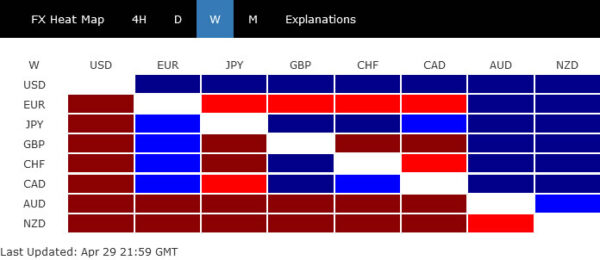
The dollar index hit its highest level since 2002, before the Fed hike
The dollar index climbed as high as 103.92 last week, hitting the highest level since 2002. But it failed to close above long-term resistance at 103.82 and ended at 102 .95 instead. The greenback is partly supported by expectations of an aggressive rate hike by the Fed, and partly by risk aversion. However, the dollar apparently lost some momentum against the yen, which somewhat capped the rise of the DXY.
A 50 basis point increase in the federal funds rate on Wednesday, May 4 is a done deal. The question is whether the Fed would deliver an even bigger 75 basis point increase in June, as currently priced in by the markets. President Jerome Powell is unlikely to answer this question concretely. Instead, as incoming data arrives, particularly this Friday’s nonfarm payrolls report, Fed officials would begin to adjust their tone to shape expectations for June.
Technically, the short-term outlook will remain bullish as long as the support at 101.03 holds. Sustained trading above 103.82 (2016 high) will confirm resumption of the overall uptrend from 70.69 (2008 low). The next target will be a 61.8% projection from 72.69 to 103.82 from 89.20 to 108.43. However, a break of 101.03 will indicate an initial rejection by 103.82 and will provide a short-term correction first, before staging another rally.
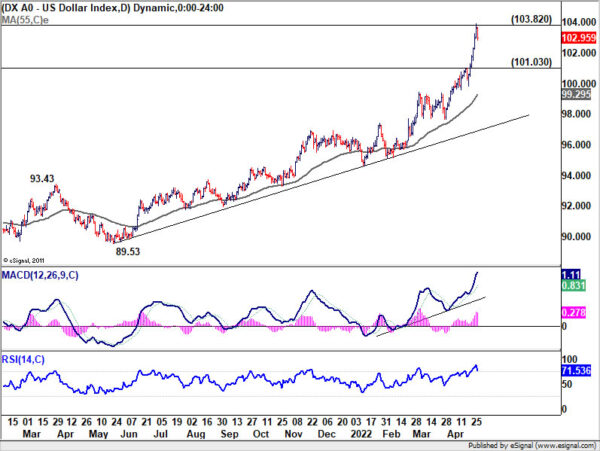
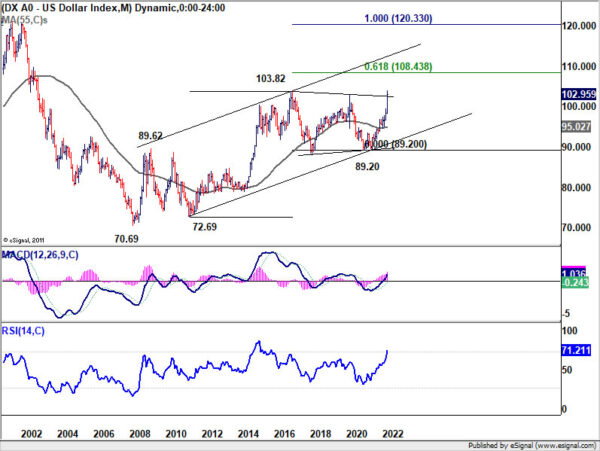
NASDAQ Resumes Mid-Term Correction, SPX 500 Will Follow Soon
The yen initially came under pressure after the BoJ doubled down on its pledge to defend the 0.25% cap on the 10-year JGB yield. The central bank also maintained an accommodative bias, pledging to ease without hesitation if necessary. Still, risk aversion gave the yen a lifeline towards the end of the week. This in turn capped the USD/JPY rally and limited the greenback’s momentum. Based on the short-term bearish outlook for the NASDAQ and S&P 500, such a trend could continue for some time.
Speaking of risk aversion sentiment, NASDAQ plunged through 12587.88 last week to resume corrective decline from 16212.22 high and hit new 2022 low. short term will now remain bearish as long as 13222.03 resistance holds for a 100% projection 100% projection from 16212.22 to 12587.88 from 14646.90 to 11022.56 next.
Nonetheless, there should be strong support around that 11022.56 level, and above the 61.8% retracement from 6631.42 to 16212.22 to 10291.28 to contain the decline and complete the correction.
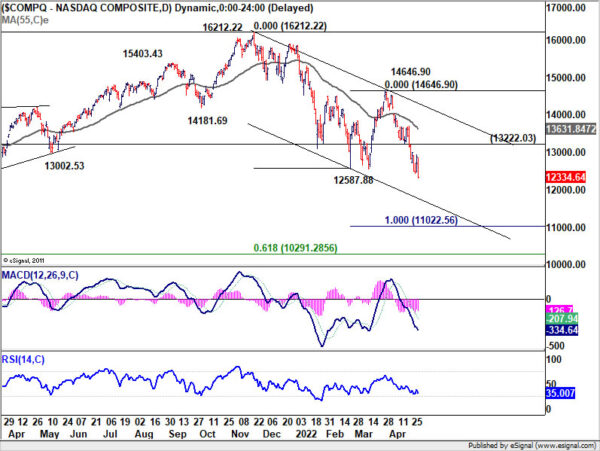
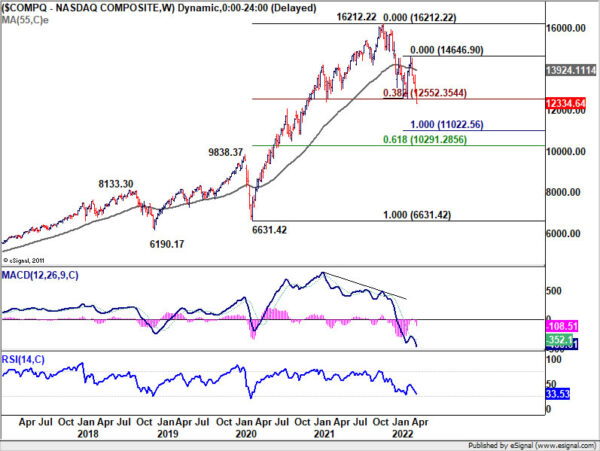
The S&P 500 is still holding above the corresponding support at 4114.65 at the moment. But he looks vulnerable. The firm break will resume correction from 4818.62 and target 100% projection from 4818.62 to 4114.65 from 4637.30 to 3933.32. For now, strong support is expected from the 38.2% retracement from 2191.86 to 4818.62 at 3815.20 to contain the decline and complete the correction.
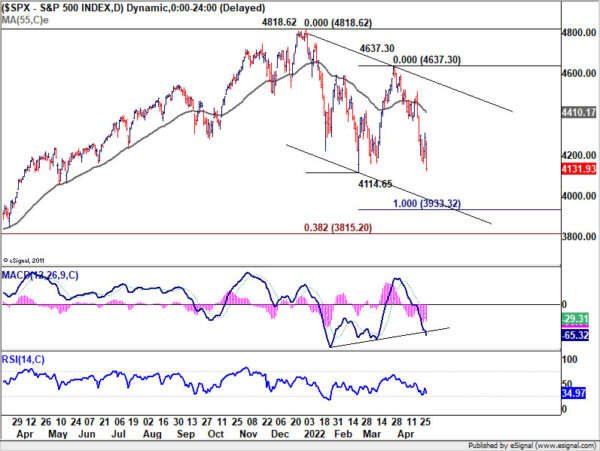
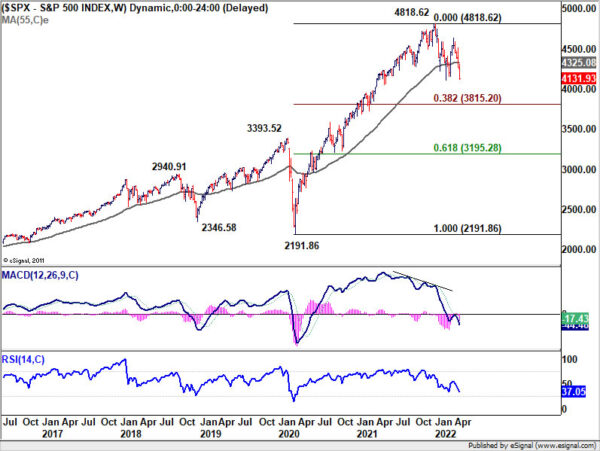
US 10-Year Yield in Consolidation, Remaining Bullish at 3%+
Bindings in US Treasury yields also helped stabilize the yen. The 10-year yield turned into consolidation after hitting 2.954. Further sideways trades may be seen in the near term, but the outlook will remain bullish as long as 2.646 support holds. The main hurdle is the trend defining long-term resistance at 3.248 (2018 high), which is unlikely to be decisively cleared on the first attempt. TNX might continue to lose bullish momentum on the next rise and start to feel heavy above the 3% handle. Any prolonged consolidation or correction in TNX would also help the yen to rally.
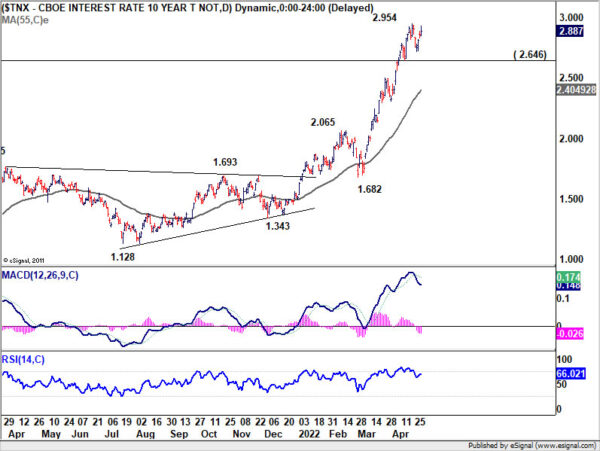
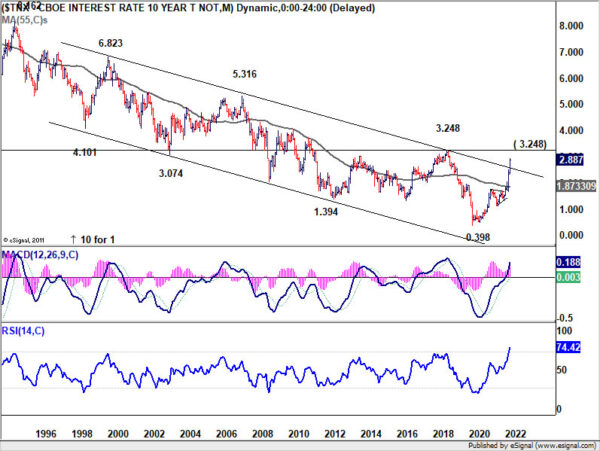
AUD/JPY extends consolidation from 95.73
The Australian dollar was under pressure, although the RBA is now expected to anticipate the first rate hike until next Tuesday and deliver another in June. The Aussie was weighed down by general risk sentiment, concerns over China lockdowns and weakness in Chinese equities and the yuan.
AUD/JPY extended the corrective pattern from 95.37 last week on the developments above. The outlook is not too bearish, however, as it only consolidates the recent rally from 80.34. A deeper drop could be seen down to the 38.2% retracement from 80.34 to 95.73 to 89.85. But there needs to be strong support, which is near the 55-day EMA (now at 89.51) to provide a bounce. However, a firm break of 89.85 would be a sign of a bigger reversal in general sentiment.
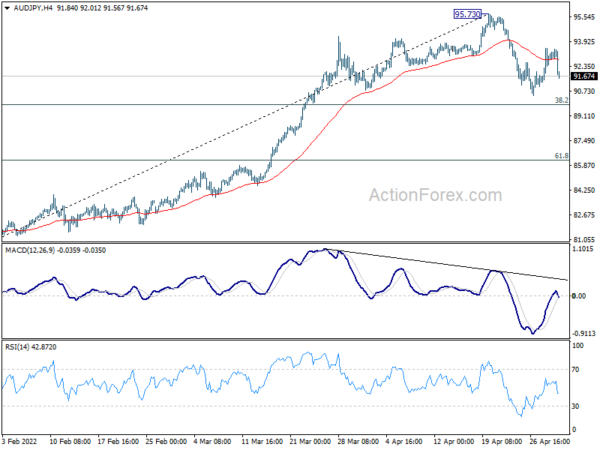
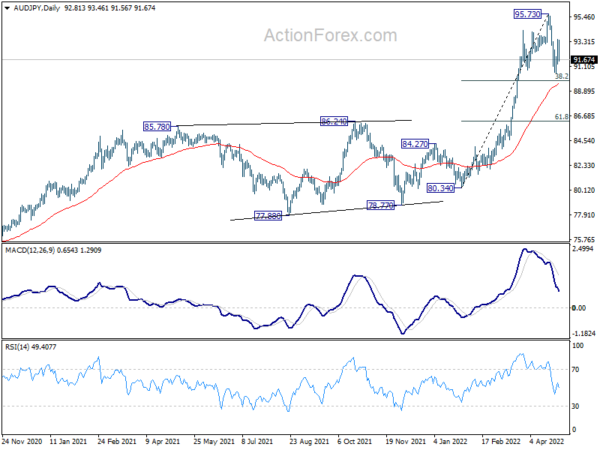
EUR/USD Weekly Outlook
The EUR/USD downtrend resumed last week and hit a low of 1.0470. As a temporary bottom has formed, the initial bias is neutral this week for some consolidations. The upside potential of the recovery should be limited by the support at 1.0756 turned resistance to trigger a resumption of the decline. The breakout of 1.0470 will target a 161.8% projection from 1.1494 to 1.0805 to 1.1184 to 1.0069.
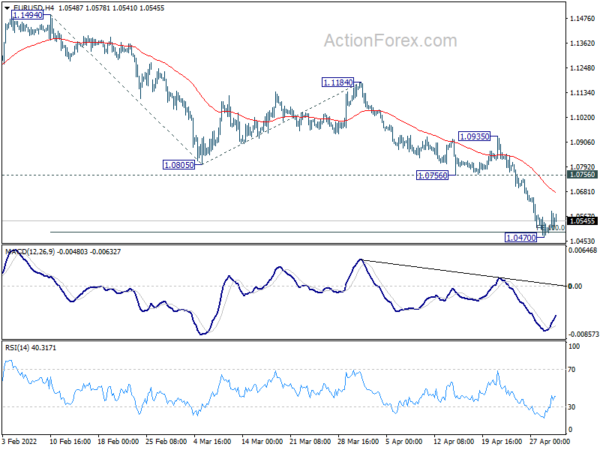
Overall decline from 1.2348 (2021 high) is likely to continue as long as 1.1185 support holds. The break of 1.0635 (2020 low) now increases the possibility that it will resume its long-term downtrend from 1.6039 (2008 high). A retest of the 1.0339 low (2017 low) should be seen next. A decisive break there will confirm this bearish case.
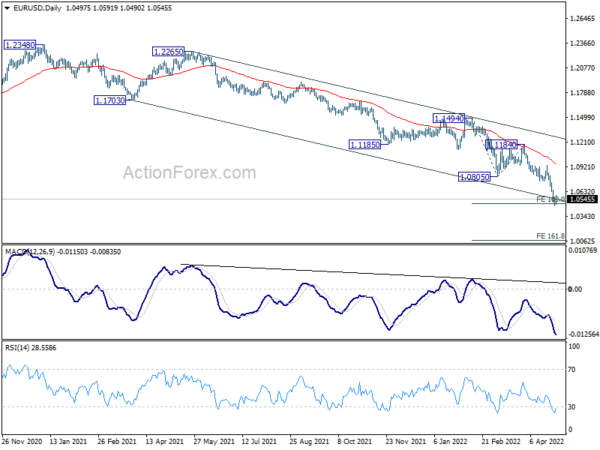
On the longer term, the current pattern suggests that the long term downtrend from 1.6039 (2008 high) is ready to resume. The breakout of 1.0339 will target a 61.8% projection of 1.3993 to 1.0339 from 1.2348 to 1.0090. A decisive break there could lead to an acceleration down to a 100% projection at 0.8694.
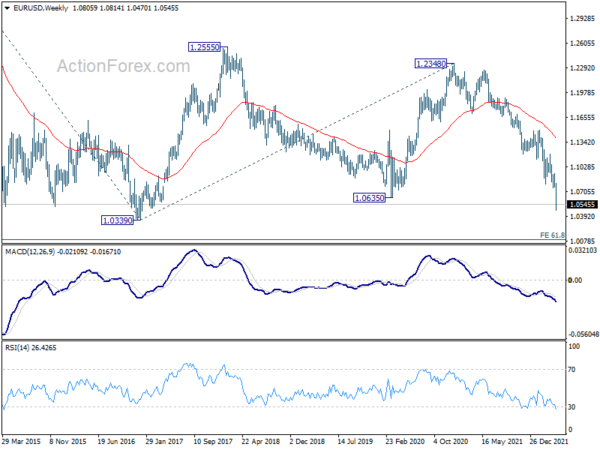
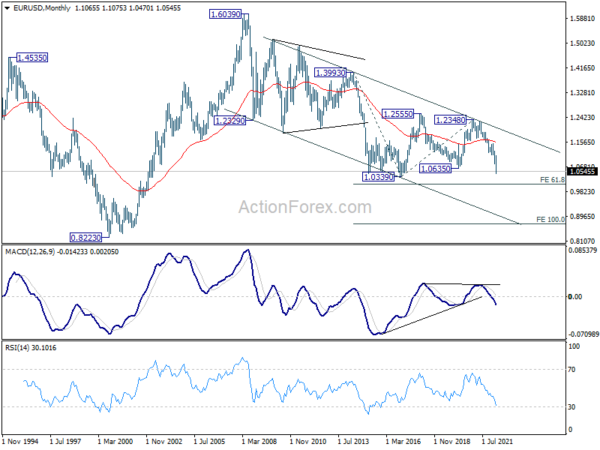


Comments are closed.